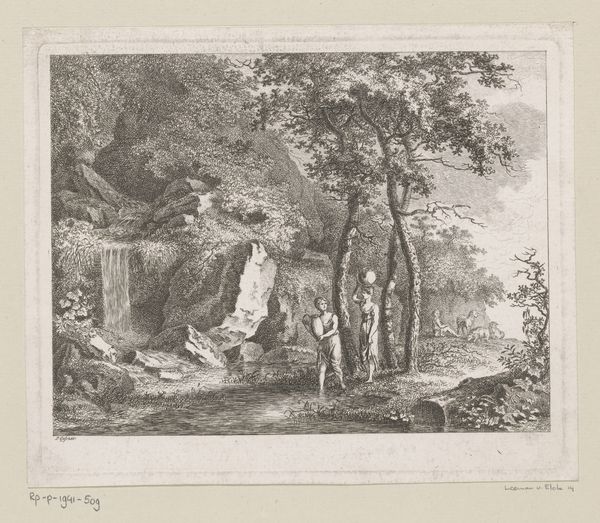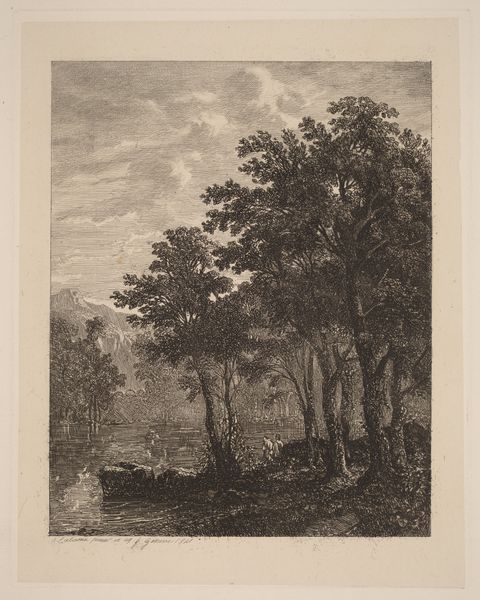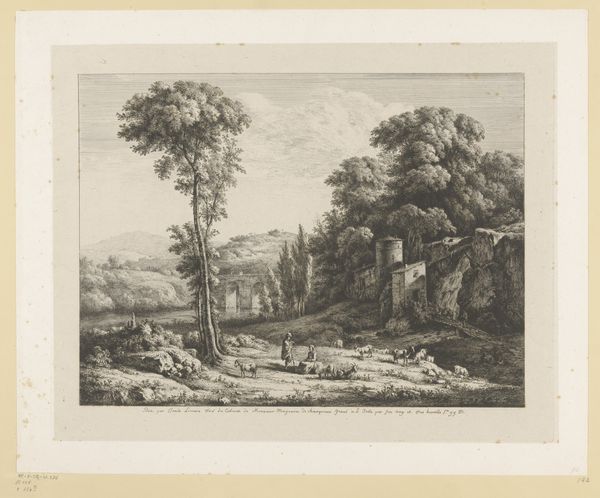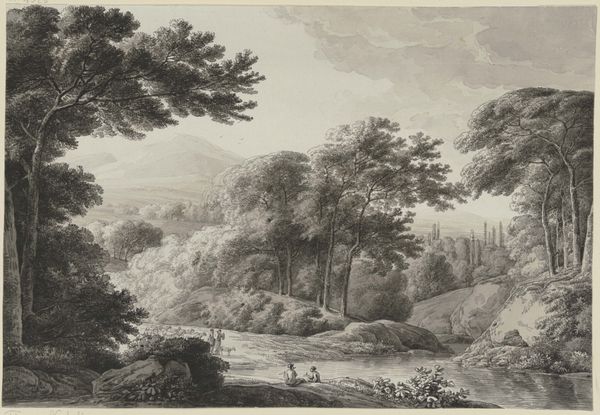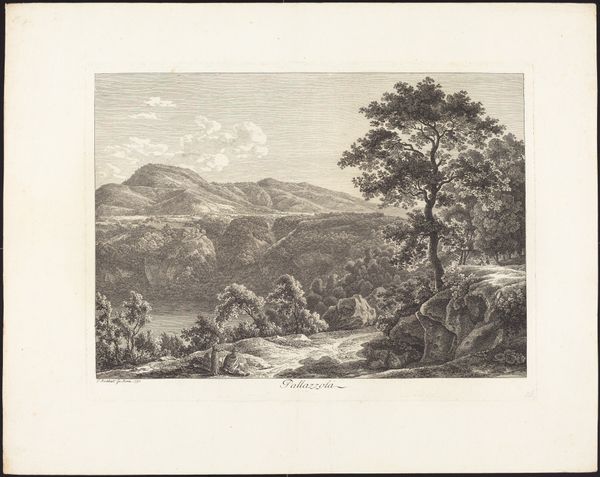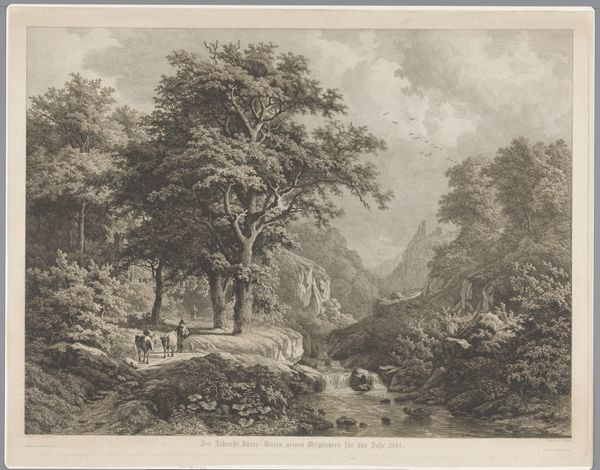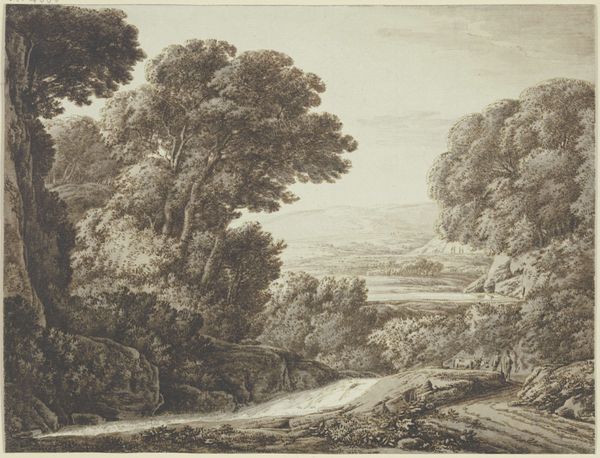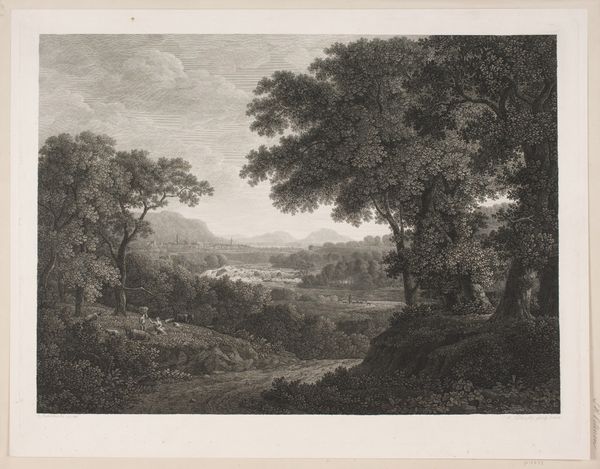
print, engraving
# print
#
landscape
#
romanticism
#
line
#
engraving
#
realism
Dimensions: 495 mm (height) x 413 mm (width) (plademaal)
Curator: The density of line is striking in this print. S.H. Petersen created "Tyrol ved Salzburg" in 1847 using engraving techniques. Editor: Yes, it's quite powerful! It feels almost like a stage, doesn't it? The trees form a proscenium framing those distant mountains. A very romantic mood. Curator: Absolutely, the framing emphasizes the drama of the landscape. Beyond the immediate visual impact, prints like these played a crucial role in shaping the 19th-century imagination of place and travel. They democratized access to landscapes for those who could not physically visit. Editor: True. Consider the travelers resting near the large tree on the left. Do they suggest that this image reflects an idealized scene? How might real versus depicted experience impact those who encountered the artwork then? Curator: An important point. They, too, seem part of the staged quality of the landscape, carefully arranged to enhance the sense of scale and picturesque charm. But they also hint at daily life, reflecting labor and nature meeting along that path. It is about making an emotional connection through symbols: mountains symbolizing eternity and steadfastness, the forest for mystery and solitude. These visuals echoed cultural narratives deeply ingrained. Editor: Narratives often tailored to specific social classes, promoting ideals about nationhood or the relationship between humans and the environment. This print, even as a reproduction, likely reinforced particular viewpoints, influencing policies and popular perceptions regarding those landscapes and its people. Did these lines contribute to creating national identity, or simply exploit common tropes about Tyrol's beautiful landscape? Curator: It is probably impossible to choose one or the other because this work speaks to a period defined by rising nationalism alongside Romantic landscape traditions. How do you view its impact now, knowing the historical forces at play when it was created? Editor: Seeing it through that lens enriches the experience. It’s a beautiful, meticulously crafted image but understanding the politics inherent in representing places and people gives it added layers. Curator: Indeed, exploring beyond the mere aesthetic allows it to speak far beyond a pleasing picture. It brings Tyrol of the 1840s into richer relief for us today.
Comments
No comments
Be the first to comment and join the conversation on the ultimate creative platform.
